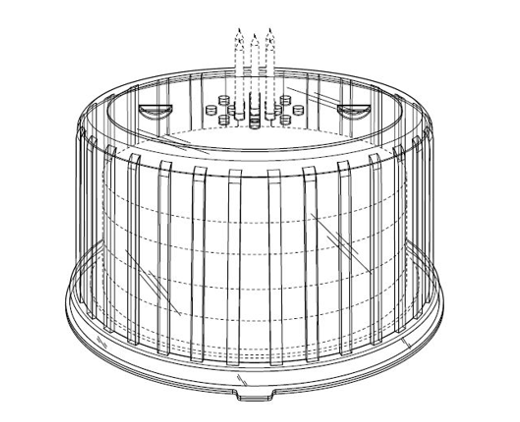How to Frame An Office Action Response to Avoid New Sheet
An office action (OA) is an official letter sent by the country’s jurisdiction in which you have applied for a patent or trademark registration. An OA consists of the legal problems with your trademark or patent application. It needs to be resolved to register your trademark or patent. While introducing a new drawing to explain some additional things about the patent, there is a need to add a new sheet in OA. Similarly, when we are splitting the drawings for the sake of clarity, it accidentally leads to a new sheet in OA. The new sheet thus added and the information introduced in it may lead to further delay in patent examination and lead to more office action.
The following article discusses the points which can be helpful to avoid new sheet requirements.
Table of Contents
Effective Office Action Responses to Prevent New Sheet
Office Action is at times inevitable and often leads to the beginning of building a robust patent portfolio system. Therefore, it is prudent to respond to office action precisely and succinctly. The action will simplify the answer and reduce the probability of requiring a new sheet to address the issue raised by the patent examiner. There are 5- practical steps (shown in Image 1) for an effective response to an office action to avoid new sheets.

Step 1: Provide detailed description of all the parts: All the parts of the drawing or illustrations must be clearly described in response to the office action without addition of a new terminology and matter. The detailed description can be either the text or components in the drawing. Detailed description eliminates the probability of future complications and possibility of another office action.
Step 2: Complete all amendments to office action on time: Any amendment in response to theoffice action should be done within the stipulated time period. Timely response ensures no future office actions will require additional new sheets to explain the issue at the front.
Step 3: Clearly mention description of all the parts in amendment: The amendment sheet must explain all the parts of the drawing or text crisply and clearly. Rather than focusing on length, care should be taken to explain the parts in short and precise ways.
Step 4: Refrain from introducing new matters that may lead to new sheets: While responding to an office action, it is always tempting to add some new matters for better explanation. However, you should avoid it as far as possible. New matters not only require new sheets but can also increase the chances of receiving another office action for new term explanation.
Step 5: The Figure description should be generic enough: The description of the figure should always be generic, highlighting only the matters related to the drawing. The description on its own should not lead to information beyond the drawing and illustrations, as it may lead to new sheets for explaining additional matters. Generally speaking, new sheet is required to explain the new matter. Therefore, the ideal approach would be to avoid the new matter altogether by filing the patent application diligently.
Introduction of New Matter
New matter is a type of matter which was not described while filing the patent. Hence, anything other than original information, whether it’s a new figure or a new part is considered as new matter in OA. It is all about the patent specification before filing. You must pay attention to the specification and disclose all the possible claim variations so that you anticipate its usage during prosecution. The key here is to stick to the original patent specification as filed. So we cannot add new matter to the already filed application but rather a second application can be filed that is linked to the first one, to introduce new matter.
Here is an example of OA which can lead to the introduction of a new matter.

In the above figure, the objection is for the insufficient line quality of the design. If we add one extra line or we disturb the shape of the product, it will lead to another OA. Similarly, adding one more image to clearly explain this will lead to new sheet in OA. So stick to the original file specification and the objections in OA to avoid introducing new matter or sheet to the OA.
The solution to this figure is attached below. In the figure, we have prepared the drawing so that all lines can be clearly visible without introducing any extra new line or any new matter.

Conclusion
By following the five effective steps discussed above, one can prevent the need for a new matter that can lead to new sheets. A timely and effective response to office action can prevent unnecessary delay in patent examination and finalization. It is a wise business strategy to outsource the work of office action responses to subject-matter-experts.
Sagacious IP’s team of professional Patent Illustrators are adept at all types of patent drawings, such as, design patent drawings, utility patent drawings, trademark patent drawings etc. The range of domains include Mechanical, Medical, Electrical, etc. as per the rules and regulations that meet the standard and specifications for USPTO, PCT, EPO and various other patent offices. We follow all the guidelines and regulations of different jurisdictions to avoid office action on drawings. We also help in resolving all types of issues mentioned in the office action.
Our expertise lies in preparing all types of drawings – from rough sketches, images or even through verbal instructions, to deliver the drawings in different formats such as .PDF, .JPG, .PNG. We can also deliver source files if requested by the client and ensure end-to-end confidentiality and security of all data entrusted to us. Click here to know more about our service.
- Rishabh Arora (Illustration) and the Editorial Team
Having Queries? Contact Us Now!
"*" indicates required fields




